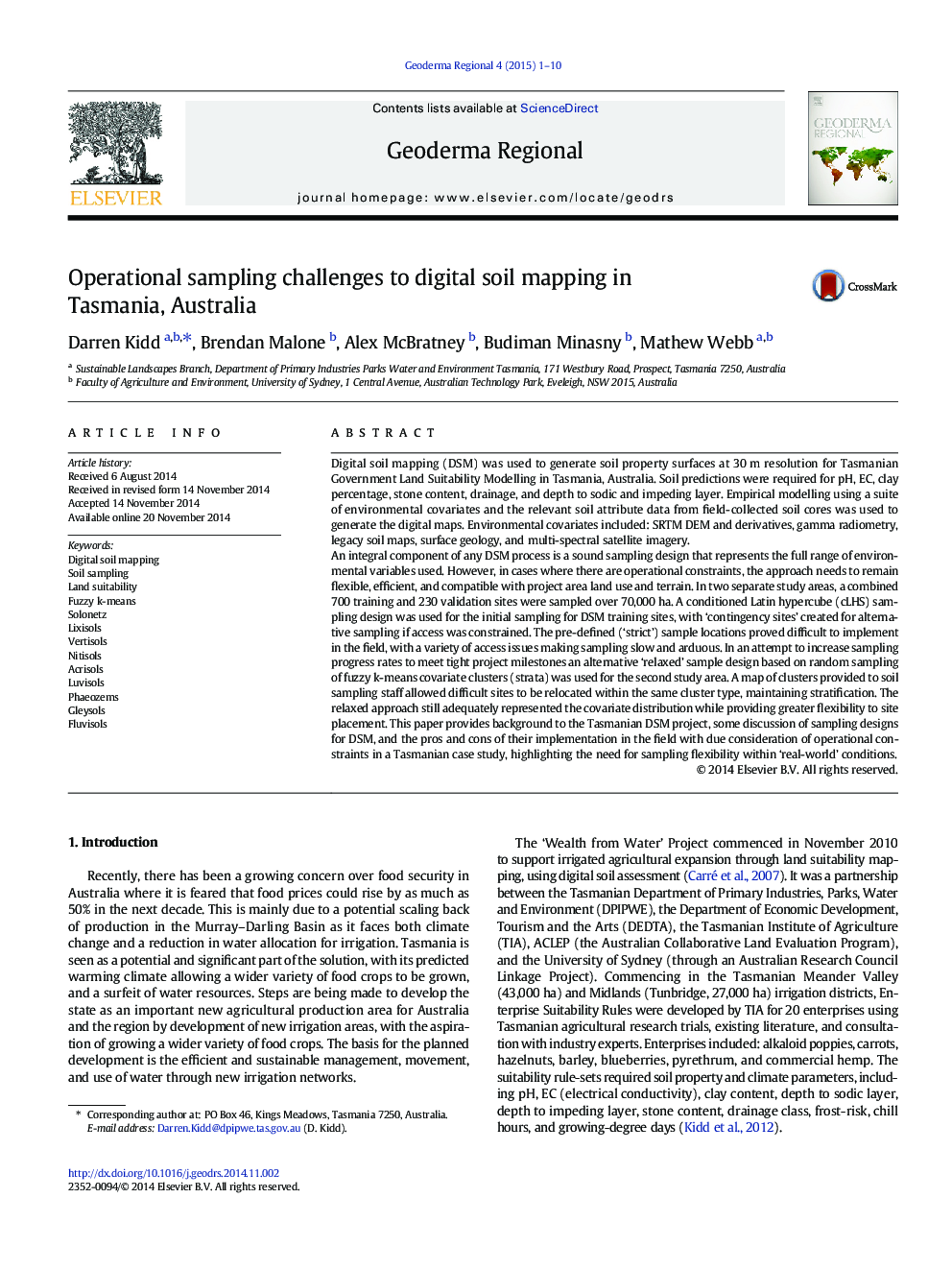| کد مقاله | کد نشریه | سال انتشار | مقاله انگلیسی | نسخه تمام متن |
|---|---|---|---|---|
| 4480785 | 1623011 | 2015 | 10 صفحه PDF | دانلود رایگان |
• Digital soil mapping for land suitability was undertaken in Tasmania, Australia.
• Pre-determined sampling techniques were found impractical and slow.
• Access constraints were substantial, with 44% of sites unattainable for sampling.
• Fuzzy k-means strata for random sampling provided more flexible and faster sampling.
• Sampling adequately represented the covariate feature space.
Digital soil mapping (DSM) was used to generate soil property surfaces at 30 m resolution for Tasmanian Government Land Suitability Modelling in Tasmania, Australia. Soil predictions were required for pH, EC, clay percentage, stone content, drainage, and depth to sodic and impeding layer. Empirical modelling using a suite of environmental covariates and the relevant soil attribute data from field-collected soil cores was used to generate the digital maps. Environmental covariates included: SRTM DEM and derivatives, gamma radiometry, legacy soil maps, surface geology, and multi-spectral satellite imagery.An integral component of any DSM process is a sound sampling design that represents the full range of environmental variables used. However, in cases where there are operational constraints, the approach needs to remain flexible, efficient, and compatible with project area land use and terrain. In two separate study areas, a combined 700 training and 230 validation sites were sampled over 70,000 ha. A conditioned Latin hypercube (cLHS) sampling design was used for the initial sampling for DSM training sites, with ‘contingency sites’ created for alternative sampling if access was constrained. The pre-defined (‘strict’) sample locations proved difficult to implement in the field, with a variety of access issues making sampling slow and arduous. In an attempt to increase sampling progress rates to meet tight project milestones an alternative ‘relaxed’ sample design based on random sampling of fuzzy k-means covariate clusters (strata) was used for the second study area. A map of clusters provided to soil sampling staff allowed difficult sites to be relocated within the same cluster type, maintaining stratification. The relaxed approach still adequately represented the covariate distribution while providing greater flexibility to site placement. This paper provides background to the Tasmanian DSM project, some discussion of sampling designs for DSM, and the pros and cons of their implementation in the field with due consideration of operational constraints in a Tasmanian case study, highlighting the need for sampling flexibility within ‘real-world’ conditions.
Journal: Geoderma Regional - Volume 4, April 2015, Pages 1–10
